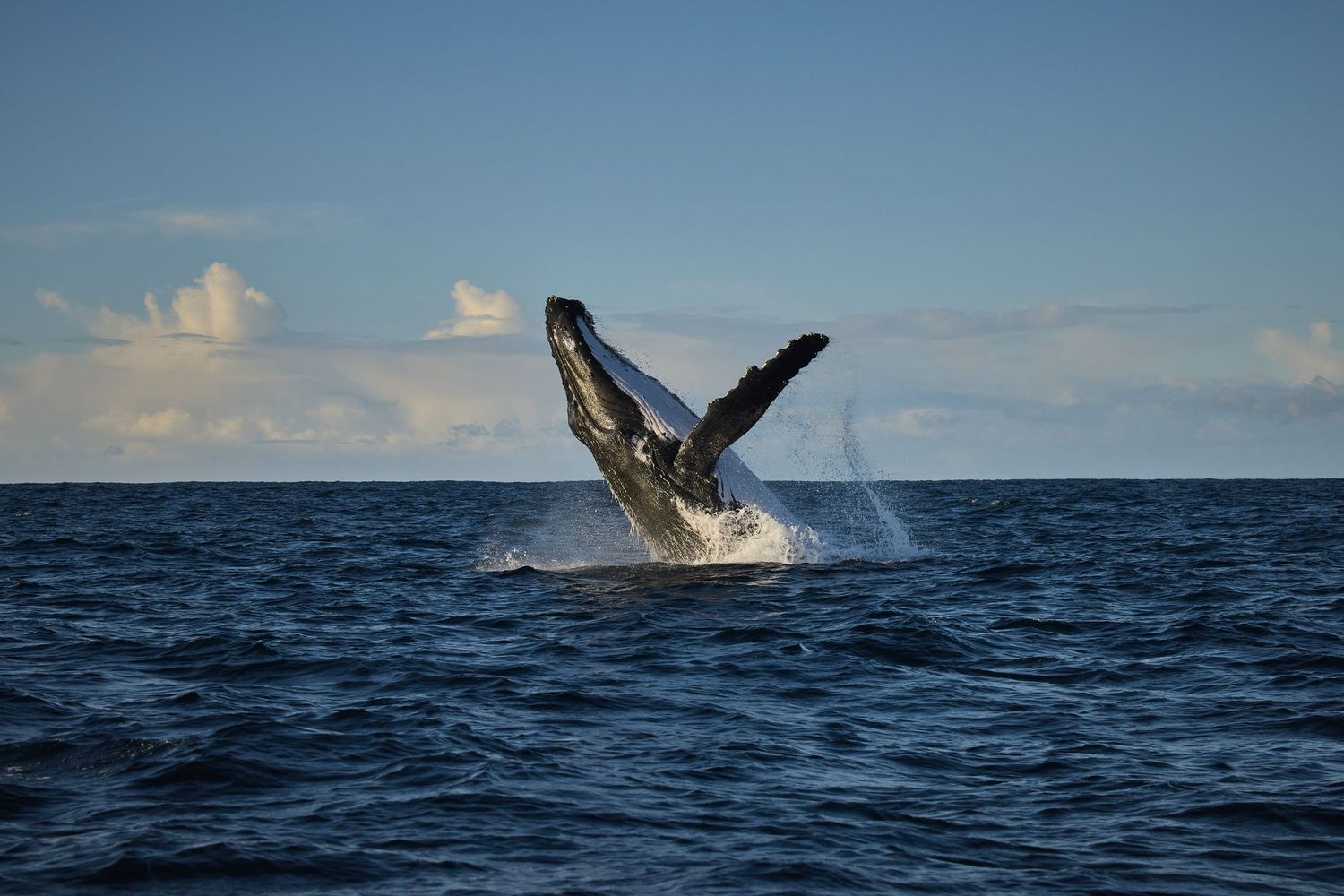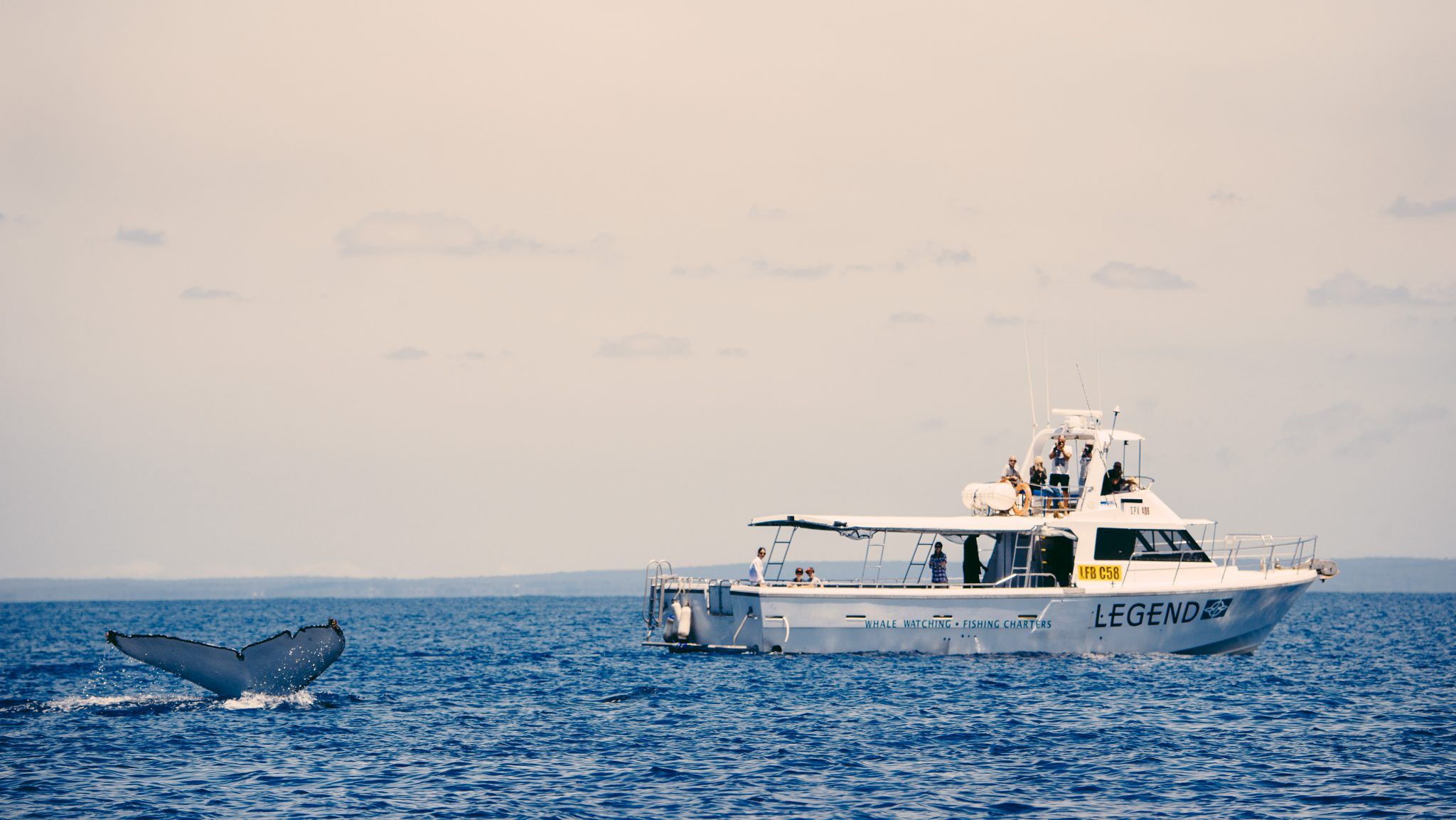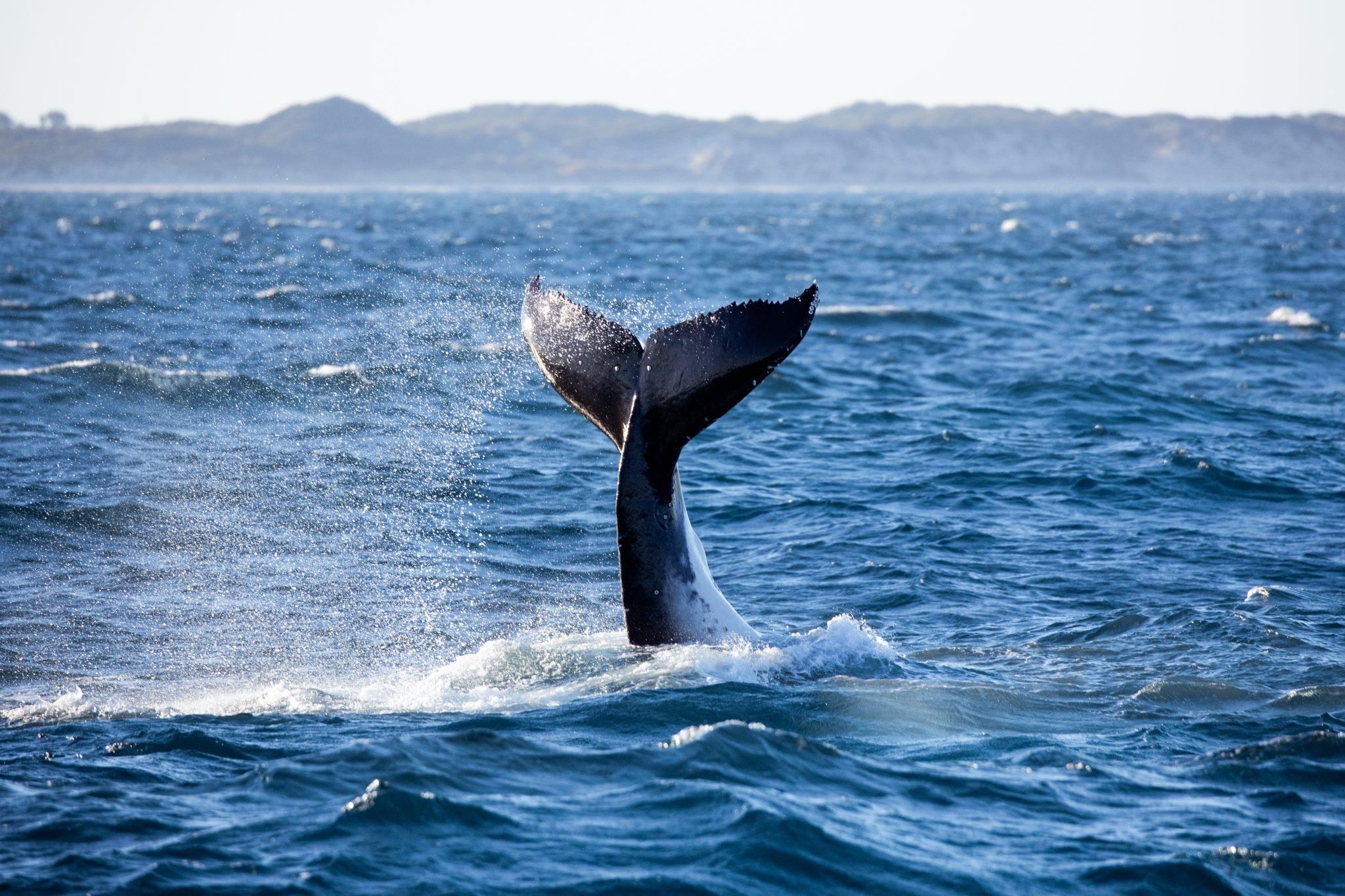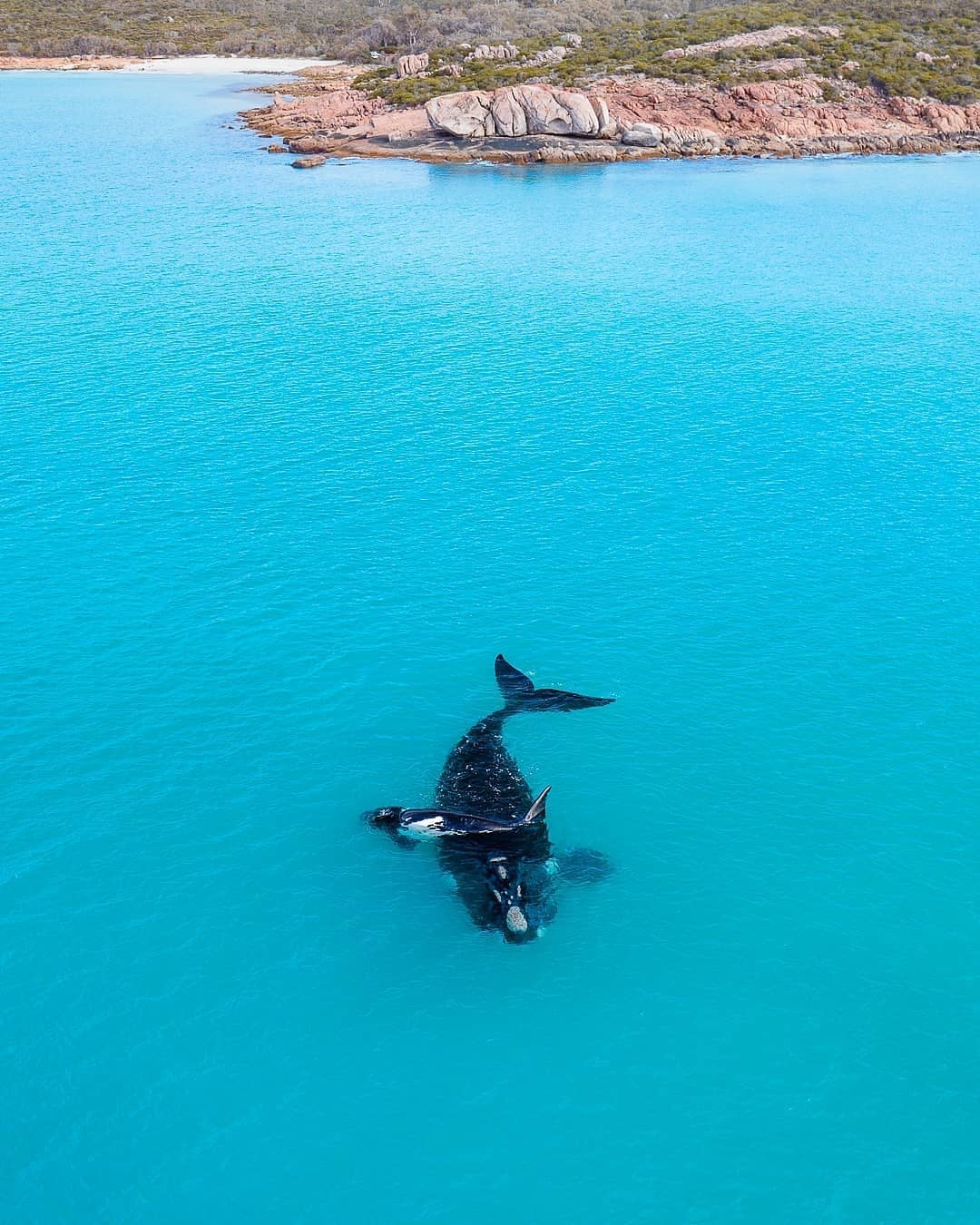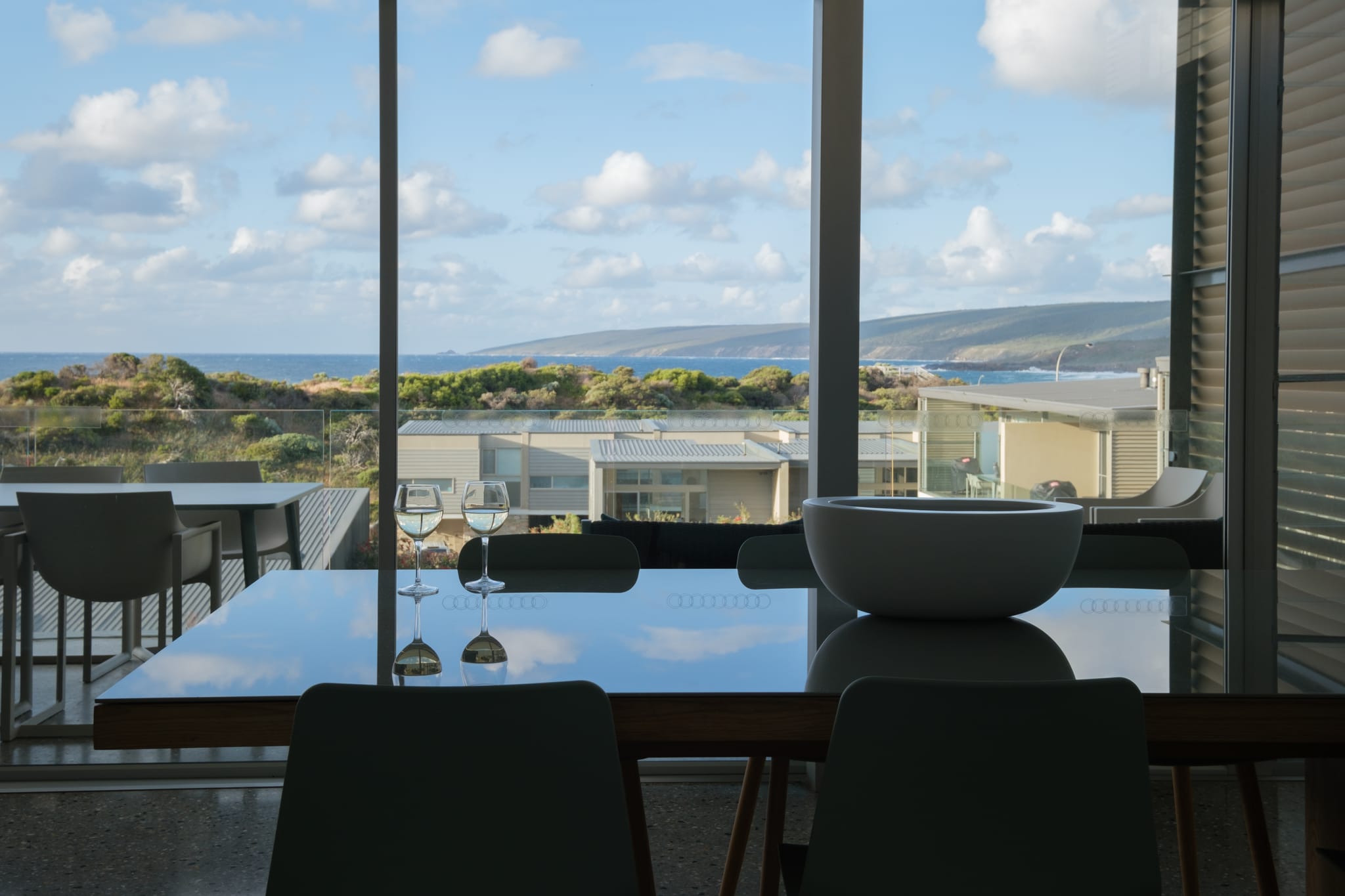Each year thousands of humpback, southern right, and rare blue whales make their annual migration along the Western Australian coast.
The annual migration gives us two opportunities for whale watching in the Margaret River Region each year. It’s an awesome experience to get eyeball-close to these incredible animals, and taking a whale watching tour gives you the best opportunity. Boats can’t approach whales closer than 100 metres from the side or closer than 300 metres in front or behind the whale, but they’re curious creatures, and often come up to inspect the boat, swimming and nosing around.
There’s also some fantastic land-based lookout points where you can often spot a whale if you’re lucky – read on for a list.
